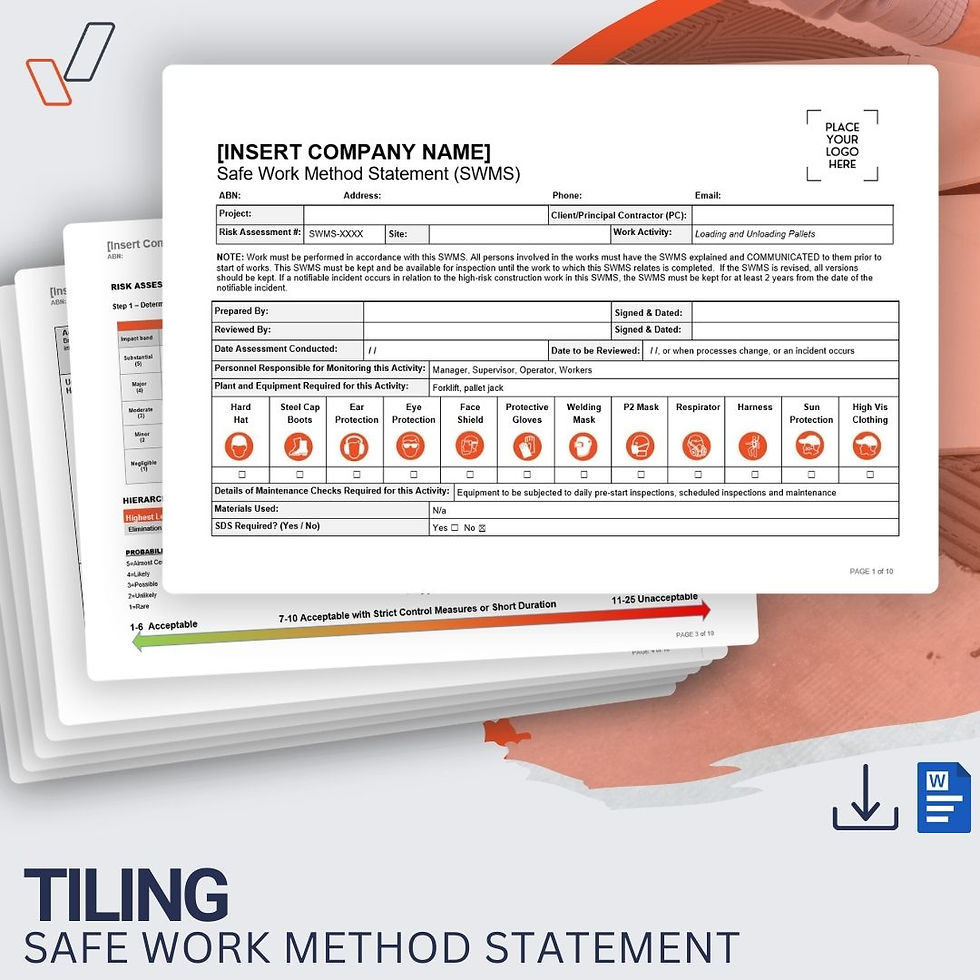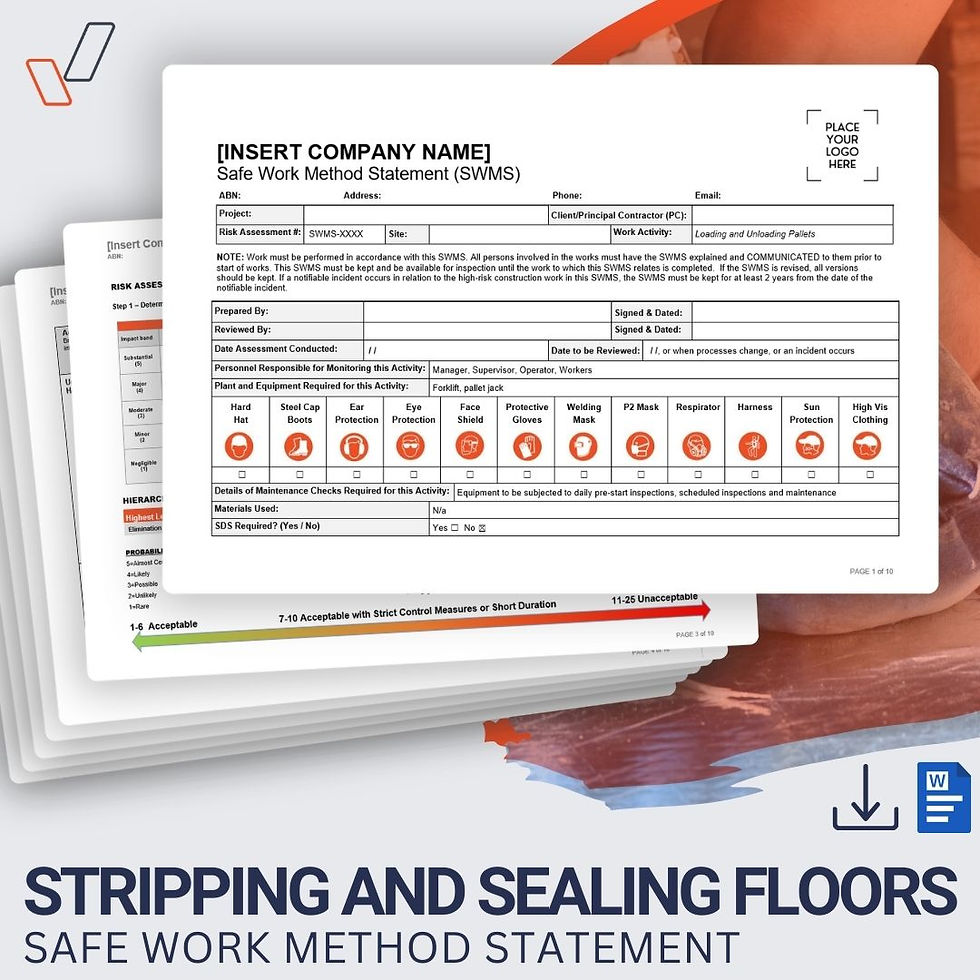This 16-page Working from a Tower Safe Work Method Statement (SWMS) provides comprehensive safety controls and identifies potential hazards associated with working from towers, including climbing, tool hoisting, and performing maintenance or installation tasks at heights.
Pre-filled and ready to use, this SWMS has been created by WHS experts to help you meet your WHS obligations and maintain compliance with Australian safety legislation. It’s suitable for all Australian states and territories and comes in a fully editable Microsoft Word format, making it easy to customise with your company name, logo, and site-specific details.
Who This SWMS Is For
This SWMS is ideal for businesses and trades involved in:
Telecommunications and tower maintenance companies
Electrical contractors and service providers
Rigging and crane operations
Civil construction and infrastructure projects
Engineering and installation contractors
General construction companies working at heights
What This SWMS Covers
This SWMS details safety procedures, hazard controls, and step-by-step work practices for working safely from towers:
Planning & Pre-start
Site induction and sign-in procedures
Daily pre-start meetings to review hazards and safety controls
Consultation on emergency muster points and radiation safety zones
Inspection & Equipment Checks
Daily pre-use inspections of climbing, rescue, and electrical equipment
Ensuring radiation meters and plant/equipment are properly calibrated
Setting up exclusion zones and bunting to restrict unauthorised entry
Safe Tower Climbing & Work Practices
Use of harnesses, ladder-safe systems, and twin-shark hooks for continuous attachment
Maintaining exclusion zones of at least 10m around towers
Hoisting and securing tools with correct rope and block systems
Working in safe weather conditions and monitoring environmental risks
Electrical & Radiation Safety
Isolation and lock-out procedures for tower power sources
Radiation monitoring and immediate evacuation if unsafe levels are detected
RCD-protected equipment, safe lead setup, and compliance with AS/NZS 3760
Emergency & Incident Response
Detailed harness retrieval and rescue procedures
Emergency evacuation planning and communication protocols
First aid requirements and response in case of accidents
What’s Included in Your Template
HRCW (High Risk Construction Work) Selection Table
Risk assessment guidelines and risk rating calculator
Step-by-step work procedures and safety controls
Hazard identification and control measures
PPE requirements and usage guidance
Plant and equipment list
Relevant legislation, regulations, codes, and standards
Worker sign-off sheet
This SWMS template for Working from a Tower is an essential tool for documenting your WHS processes quickly and effectively. Designed for easy editing and customisation, it adapts seamlessly to your specific operational needs, saving you time and effort while supporting your compliance requirements.
Perfect for tenders, safety audits, and day-to-day operations, this template ensures your business stays safe, organised, and WHS-ready.
Get your Working from a Tower SWMS today and start using it instantly!
Working from a Tower SWMS
We accept the following payment methods:
➡️ Pre-filled and ready to use
➡️ Created by WHS experts, aligned with Australian WHS legislation
➡️ Suitable for all Australian states and territories
➡️ Instant delivery via email.
➡️ Fully Editable (Microsoft Word Format).
➡️ Quickly add your logo and business details.
➡️ Easy customisation instructions included.
➡️ Pay once, use it as many times as you need.
➡️ 12 months free email & phone support.


















